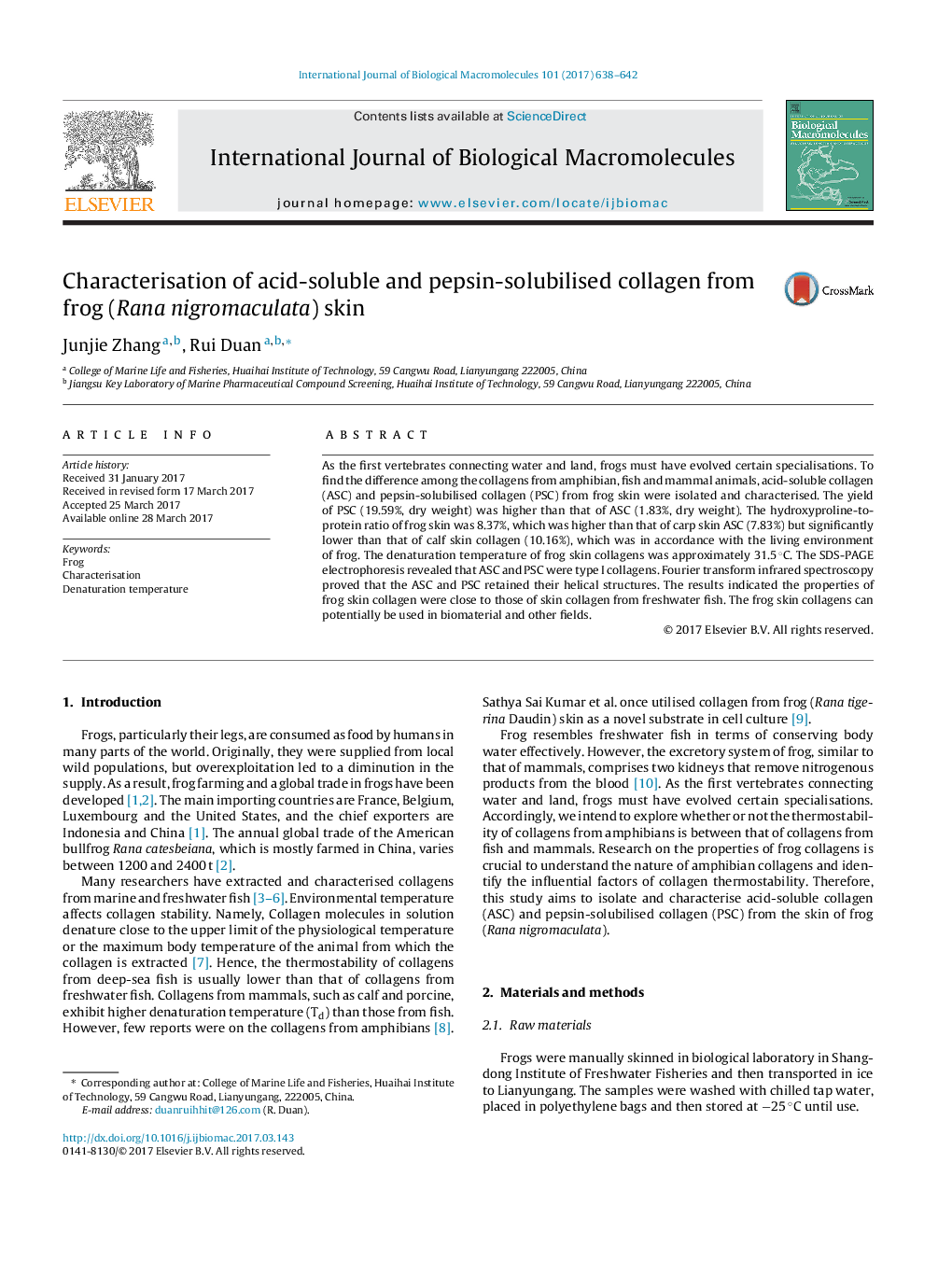| Article ID | Journal | Published Year | Pages | File Type |
|---|---|---|---|---|
| 5511993 | International Journal of Biological Macromolecules | 2017 | 5 Pages |
Abstract
As the first vertebrates connecting water and land, frogs must have evolved certain specialisations. To find the difference among the collagens from amphibian, fish and mammal animals, acid-soluble collagen (ASC) and pepsin-solubilised collagen (PSC) from frog skin were isolated and characterised. The yield of PSC (19.59%, dry weight) was higher than that of ASC (1.83%, dry weight). The hydroxyproline-to-protein ratio of frog skin was 8.37%, which was higher than that of carp skin ASC (7.83%) but significantly lower than that of calf skin collagen (10.16%), which was in accordance with the living environment of frog. The denaturation temperature of frog skin collagens was approximately 31.5 °C. The SDS-PAGE electrophoresis revealed that ASC and PSC were type I collagens. Fourier transform infrared spectroscopy proved that the ASC and PSC retained their helical structures. The results indicated the properties of frog skin collagen were close to those of skin collagen from freshwater fish. The frog skin collagens can potentially be used in biomaterial and other fields.
Related Topics
Life Sciences
Biochemistry, Genetics and Molecular Biology
Biochemistry
Authors
Junjie Zhang, Rui Duan,
